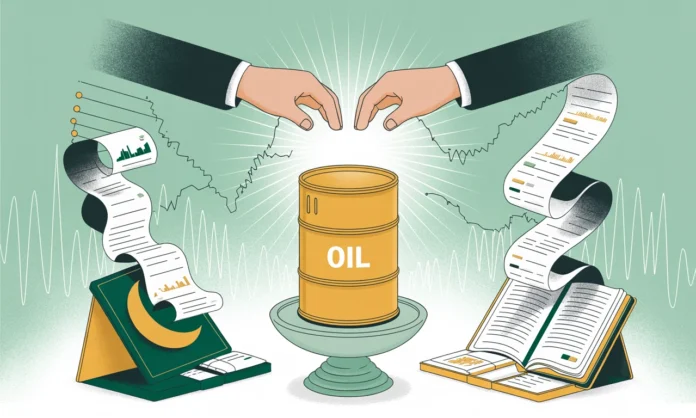Introduction: Why Energy Markets Matter to UAE Investors
The United Arab Emirates stands at the heart of the global energy industry, with oil and gas forming the backbone of the nation’s economic prosperity. For investors in this energy-rich region, understanding oil markets offers unique advantages beyond geographical proximity. The convergence of local expertise, advanced financial infrastructure, and zero taxation creates an environment where UAE residents can effectively trade oil as a financial instrument.
Global oil markets trade approximately 100 million barrels daily. According to the UAE Ministry of Energy, the country produces roughly 3 million barrels per day, making it the seventh-largest oil producer globally. This production scale means that oil price movements directly impact the local economy—factors that UAE residents intuitively understand better than distant observers.
Understanding Oil as a Trading Instrument
The Basics of Oil Market Structure
Two primary oil benchmarks dominate global trading: Brent crude from the North Sea and West Texas Intermediate from the United States. Brent serves as the pricing reference for approximately two-thirds of internationally traded crude oil, including most Middle Eastern production.
When you trade oil as a financial instrument, you’re speculating on price movements without ever taking delivery of actual crude. This eliminates concerns about storage, transportation, and massive capital requirements. You can profit from both rising and falling prices by taking long or short positions respectively.
Leverage in oil trading magnifies both gains and losses significantly. A typical broker might offer 1:100 leverage, meaning your $1,000 deposit controls a $100,000 position. A mere 1% price move generates either $1,000 profit or $1,000 loss. This magnification effect makes risk management absolutely crucial.
Key Factors Driving Oil Prices
Supply dynamics: The Organization of Petroleum Exporting Countries, of which the UAE is a founding member, coordinates production levels. When OPEC announces production cuts, markets typically rally. Understanding OPEC politics gives UAE residents insights that foreign traders struggle to acquire.
Global demand: China’s industrial expansion, US transportation patterns, and European manufacturing activity all influence oil consumption. Economic data releases from these regions create trading opportunities.
Geopolitical events: Conflicts in producing regions, sanctions, or political instability trigger sudden price spikes. UAE traders possess advantages due to proximity and understanding of Middle Eastern dynamics.
Dollar strength: Crude is universally priced in US dollars. When the dollar appreciates, oil becomes more expensive in other currencies, reducing demand. This relationship creates opportunities for traders monitoring both currency and commodity markets.
Comparing Oil Trading with Alternative Investments
| Investment Type | Volatility | Capital Required | UAE Advantage |
|---|---|---|---|
| Oil Trading | Very High | Low (500 AED) | Regional expertise |
| Forex Trading | High | Very Low (200 AED) | Tax benefits |
| Real Estate | Low | Very High (500,000 AED) | Market access |
| Stock Trading | Medium | Medium (5,000 AED) | Tax benefits |
This comparison reveals oil trading’s unique risk-return profile alongside forex opportunities. The high volatility creates substantial profit potential but demands corresponding risk management discipline. The low capital requirement makes these markets accessible to investors who cannot afford property or large stock portfolios.
Developing Effective Trading Strategies
Technical Analysis for Oil Markets
Oil respects technical analysis principles remarkably well. Support and resistance levels at round numbers like $70, $80, or $90 per barrel often prove significant. Trend-following approaches work particularly well due to extended directional moves.
Moving average crossovers help identify trends early. When the 50-day moving average crosses above the 200-day average, it signals upward momentum. Volatility indicators like Bollinger Bands help gauge market conditions and identify entry opportunities.
Fundamental Analysis Approaches
Inventory reports: The US Energy Information Administration releases crude oil inventory data every Wednesday. When inventories rise more than expected, prices typically fall. Unexpected draws suggest strong demand, supporting prices.
OPEC meetings: Production decisions drive significant price movements. Following news from OPEC members and monitoring compliance provides edges in predicting policy directions.
Economic indicators: Chinese manufacturing PMI, US employment reports, and European industrial production all influence oil demand expectations.
Risk Management Essentials
Trading oil without proper risk controls can destroy accounts rapidly. These principles are survival requirements:
- Maximum 2% risk per trade – calculate position size so stop-loss limits potential loss to 2% of total capital
- Stop-loss on every position – never enter a trade without predetermined exit
- Profit targets before entry – know your exit strategy for wins
- Reduced size during volatility – cut position sizes during major news events
- Regular review and adjustment – analyze every trade to identify patterns
Practical Implementation for UAE Traders
Optimal trading windows: Maximum oil market activity occurs during European business hours (12:00-20:00 UAE time). The US inventory report released at 18:30 UAE time every Wednesday creates the week’s highest volatility spike.
Platform selection: Choose brokers offering tight spreads on crude oil, fast execution, and clear regulatory oversight. For investors seeking diversified trading capabilities in both energy and currency markets, platforms like fbs-ar.com/ar provide comprehensive access to oil trading alongside forex in UAE, enabling portfolio diversification through a single interface while maintaining consolidated risk management.
Local knowledge advantages: Living in the UAE provides insights unavailable to distant traders. Understanding regional politics and accessing local news sources give you information edges. When regional events affect oil markets, local traders often recognize implications faster.
Tax benefits: UAE’s zero-income-tax policy applies to oil trading profits, creating substantial advantages. Tax-free compounding over years dramatically accelerates wealth accumulation compared to traders in jurisdictions where taxes claim 20-40% of gains.
Common Pitfalls to Avoid
Ignoring inventory cycles: Crude oil inventories follow predictable seasonal patterns. Traders unaware of these patterns misinterpret normal seasonal movements as trend changes, entering positions at wrong times.
Overreacting to news: Oil markets receive continuous news flow. Beginners often overreact to every headline, churning their accounts. Professional traders distinguish significant developments from noise.
Poor position sizing: Emotional position sizing leads to overleverage. Mathematical precision in calculating lot sizes prevents this fatal error.
Conclusion: Your Path Forward
Oil trading offers UAE residents exceptional opportunities to leverage regional expertise, advanced infrastructure, and favorable tax treatment. The combination of proximity to major producing regions and zero taxation creates advantages that traders elsewhere cannot match.
Begin with comprehensive education covering oil market fundamentals, technical analysis, and risk management. Progress to extended demo trading where mistakes cost nothing. When transitioning to live trading, start with position sizes that feel uncomfortably small—your initial goal is developing correct habits, not maximizing profits.
Remember that professional oil traders spent years developing their skills. Approach oil trading as a marathon requiring sustained effort, not a sprint promising instant wealth. Markets reward patience, discipline, and continuous learning. Start your education today and build the skills that can generate returns throughout your investing lifetime.

